MEND Project Exhibition
11:00am - 4:00pm
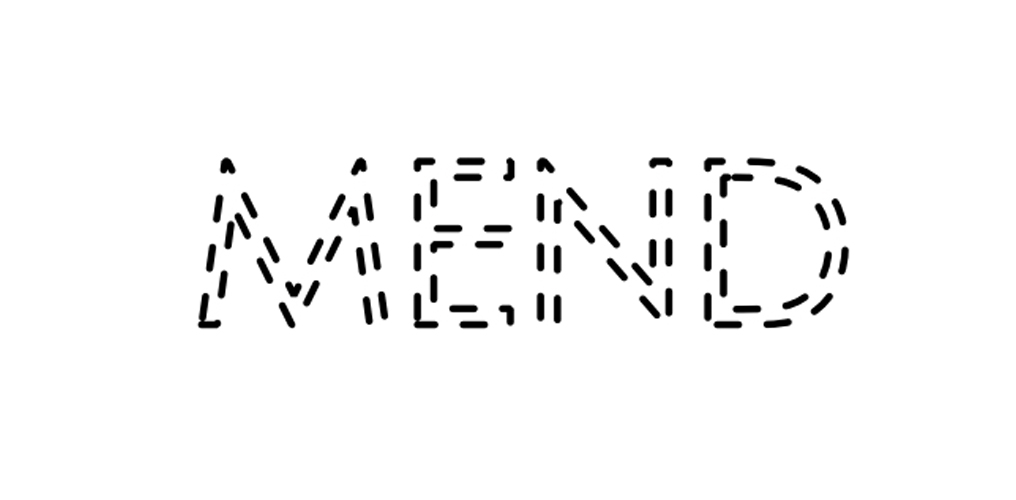
MEND is a student exchange project examining the physical mending and restoration of materials, particularly of cloth and paper, to express many aspects of healing, involving students of MTU Crawford College of Art & Design, Cork, Ireland and Kaunas, Lithuania.
Open 4-28 11-4 Tues-Fri (Closed 17 & 18 March)
Details on artists and work:
Artist - Meda Vitartaitė
COURSE AND YEAR Final Bachelor Project
TITLE OF WORK: TEXTORIUM FUNGARIUM
TECHNIQUES/MATERIALS/SIZE
Symmetrical rya knot weaving / synthetic thread, plastic, strips of synthetic
fabric, paper, metal, silicone.
Size: 10 parts, 20 x 20 x 4 cm and 10 papers A4 size
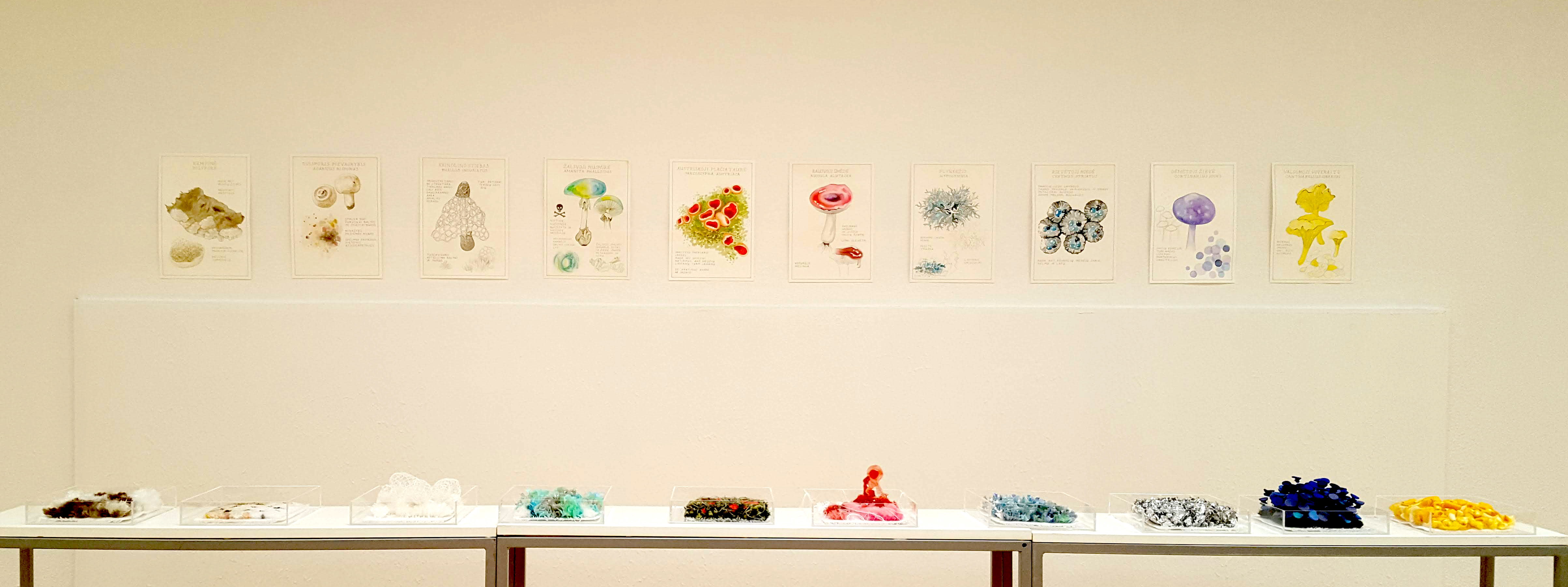
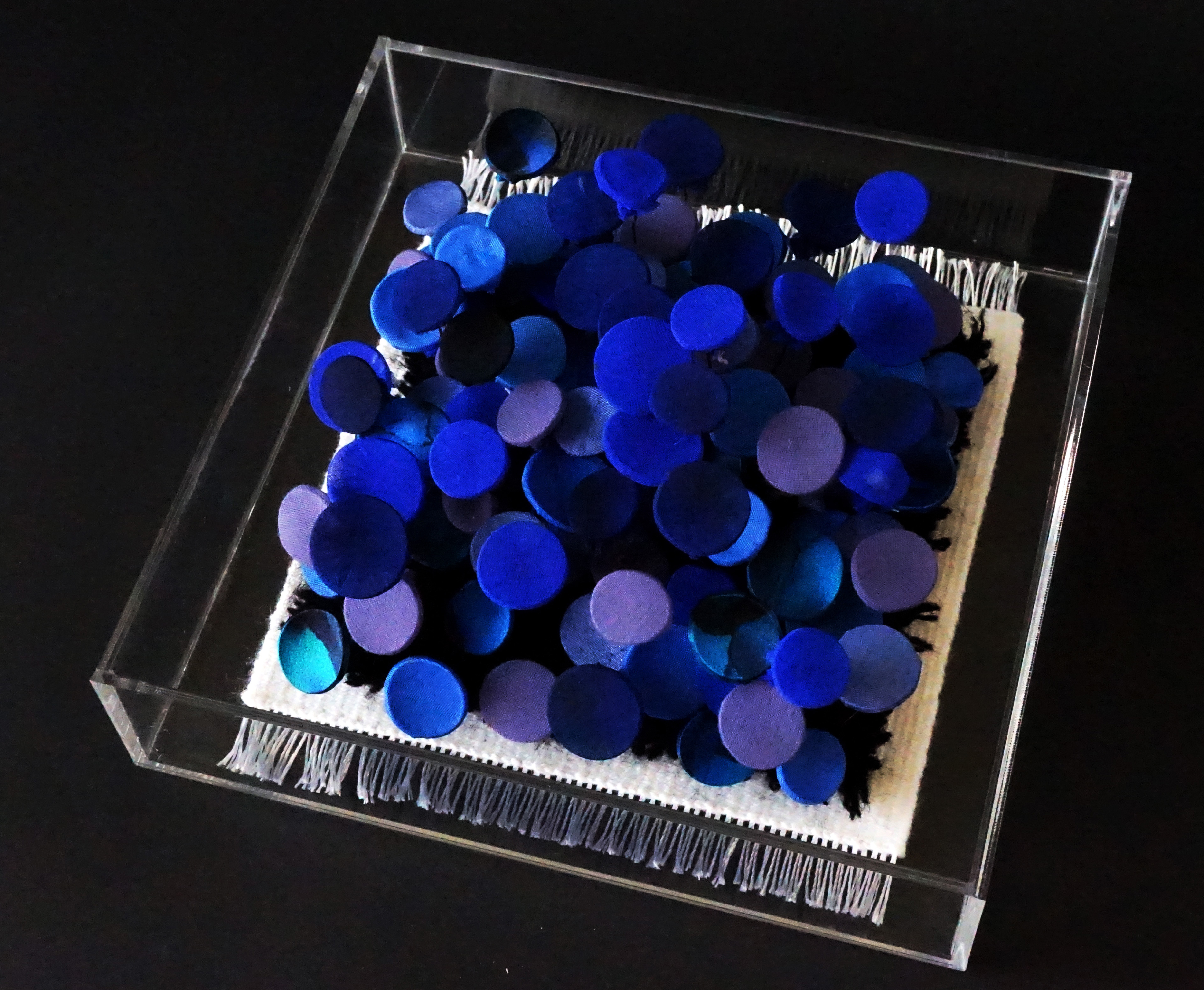

----------------------------------------------------------------------------------------------------------------------
Artist - Odeta Liutvinaitė
COURSE AND YEAR Final Bachelor Project
TITLE OF WORK: DOLL DRESSES
TECHNIQUES/MATERIALS/SIZE
Kumo shibori / old dresses
Size: 30 x 20 cm; 26 x 30 cm; 36 x 20 cm

-----------------------------------------------------------------------------------------------------------------
Artist - Dee Cafferkey
Art Textile year 2 (final)
TITLE OF WORK: REMNANTS
TECHNIQUES/MATERIALS/SIZE
Steel wool (rusted); rusted sheet steel from cattle feeder; cotton rust-dyed on pig farrowing crate; silk fibre;
The garment I have made illustrates a journey through grief and the predicted future emergence as a person forever changed by the experience.
It takes the shape of a pregnant woman, and knots of hand dyed silk thread count the calendar of days through pregnancy, marking the passing of each day and each week, every one a precious memory.
This garment represents a piece of armour, constructed within the mind and around the body for protection during a time of grief.
As time passes, it begins to rust and crumble allowing the wearer to be open, exposed, and vulnerable again.
But beneath the hard armoured cocoon there is another type of protection now. This soft cotton band holds a memory, an imprint. It is a reminder of what was lost and what was found.
The wearer of this band is ready for battle again.
Forever changed, but ready.
And the band, with its wraps and fold of fabric, gives the wearer room to grow, and hope for the future.

--------------------------------------------------------------------------------------------------------------------------
Artist - Judy Lawler
COURSE AND YEAR: Art Textile year 2 (final)
TITLE OF WORK: THINGS WE KEEP
TECHNIQUES/MATERIALS/SIZE:
Cotton 25 X 25 cm mounted on 30cm X 30cm card. Dye, print, and stitch.
"This piece is inspired by a memory of a visit to my uncle’s house. During this visit we discussed a woollen jumper he had darned extensively. I have tried to capture the repetitive structure of the knitting pattern through block print, and the organic flow of the mending through stitch.
(a bit of her creative writing about this, that Judy allowed me to share):
We drank tea from tea-stained mugs, and talked of romance, life, and biscuits. He was darning in red wool, constructing a knotted weave with no order. He carefully considered each action to bridge the gaps. So far he had saved his pullover from two six-inch holes across the stomach and minor grazes. The original knitwear was tan, and the scars of the mending were becoming more impressive. I thought about the things we save and keep, and the things we alter to make our own."

--------------------------------------------------------------------------------------------------------------------------
Artist - Joanne O’Mahony
COURSE AND YEAR: BA Contemporary Applied Art Year 3
TITLE OF WORK: RESILIENCE
TECHNIQUES/MATERIALS/SIZE
Paper and cotton thread; digital print, collage, machine stitch, 9 X 11 inches
RESILIENCE was influenced by Sashiko,the Japanese form of stitch which began as a method to repair clothing. Using simple stitch, it is ultimately reinforcing and makes the garment stronger.
RESILIENCE is a piece reflecting the strength gained through healing.

---------------------------------------------------------------------------------------------------------------------
Artist - Mary Goggin
COURSE AND YEAR Art Textile year 2 (final)
TITLE OF WORK: STIMULATING CONVERSATION
TECHNIQUES/MATERIALS/SIZE
Cotton fabric, metallics; sewing and embroidery threads. Digital and hand embroidery.
Limerick-born neuroscientist Dr. Phil Kennedy’s mission to mend speech loss in patients affected with Motor Neuron disease resulted in him having tiny electrodes implanted inside his own brain to continue his research. My work seeks to demonstrate this process in stitch.
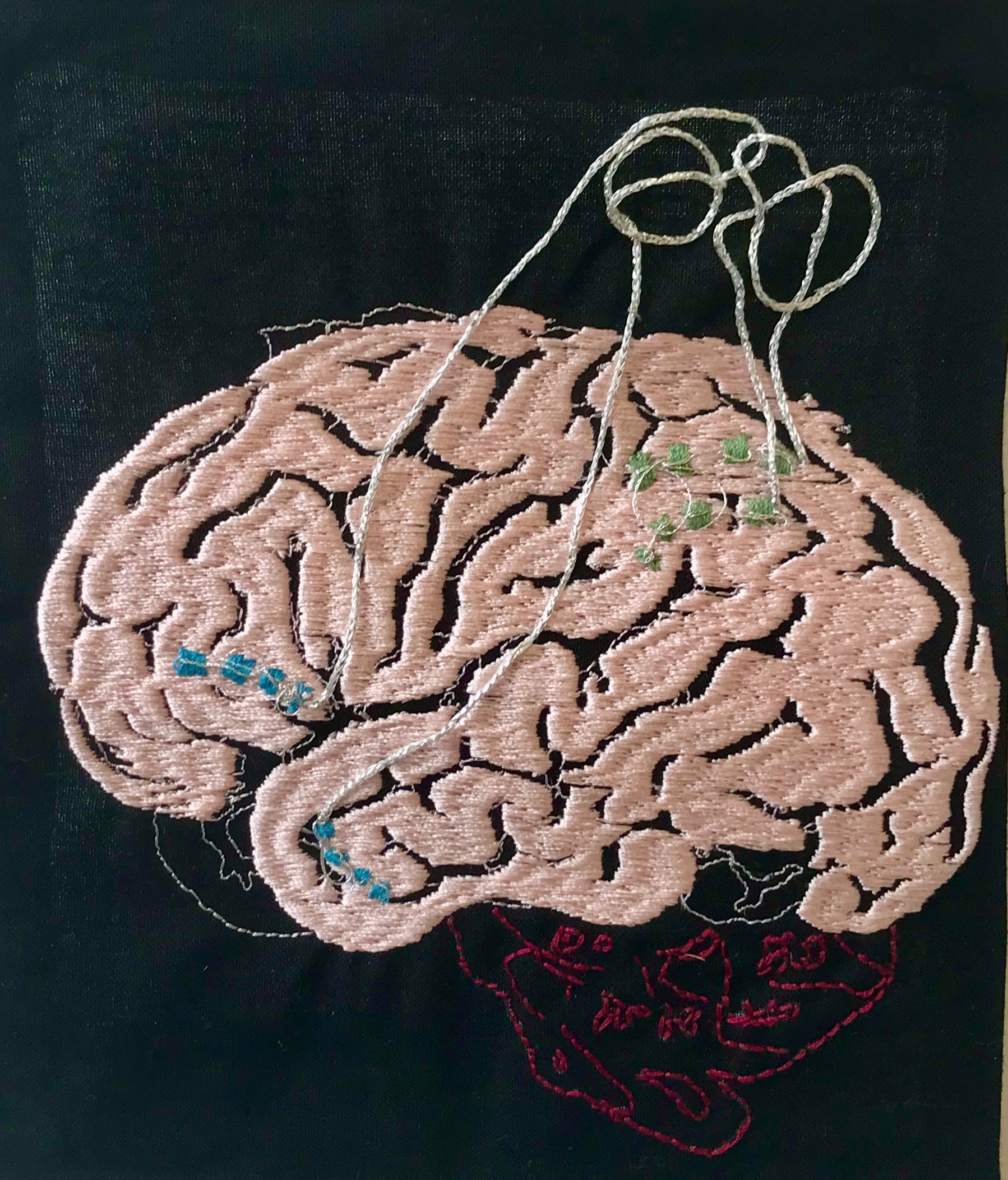
Artist - Mary Goggin
COURSE AND YEAR - Art Textile year 2 (final)
TITLE OF WORK: GUT MICROBIOTA
TECHNIQUES/MATERIALS/SIZE - Laboratory coat; mixed materials and techniques including sewing, crochet, construction. We each possess an invisible internal world collectively known as the ‘gut microbiota’- as individual to us as a fingerprint. Approximately 100 trillion micro-organisms exist in the human gastrointestinal tract. The composition of human gut microbiota changes over time, when the diet changes, and as overall health changes. We can feed it naturally or pop a pill.
Coming from a scientific background, my work seeks to depict the microcosm within; that diverse population which can protect us or make us ill. Using the laboratory white coat as a symbol of protection and the barrier between inside and outside, I try to open a window and shine a light which enables the viewer to see inside the body, revealing the multitudes within.
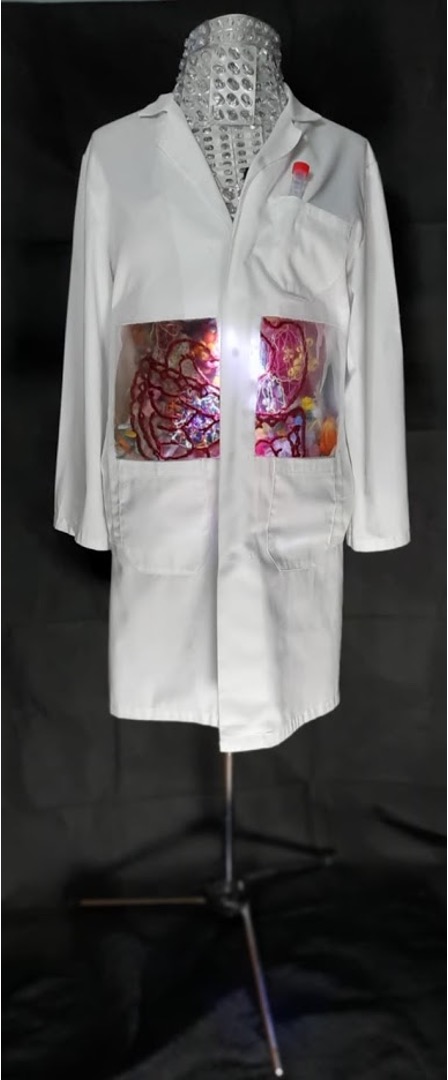
As part of MAKE 2022 - Art & Healing.
Click for more information, and registrar for this free online symposium.
Artwork from Students